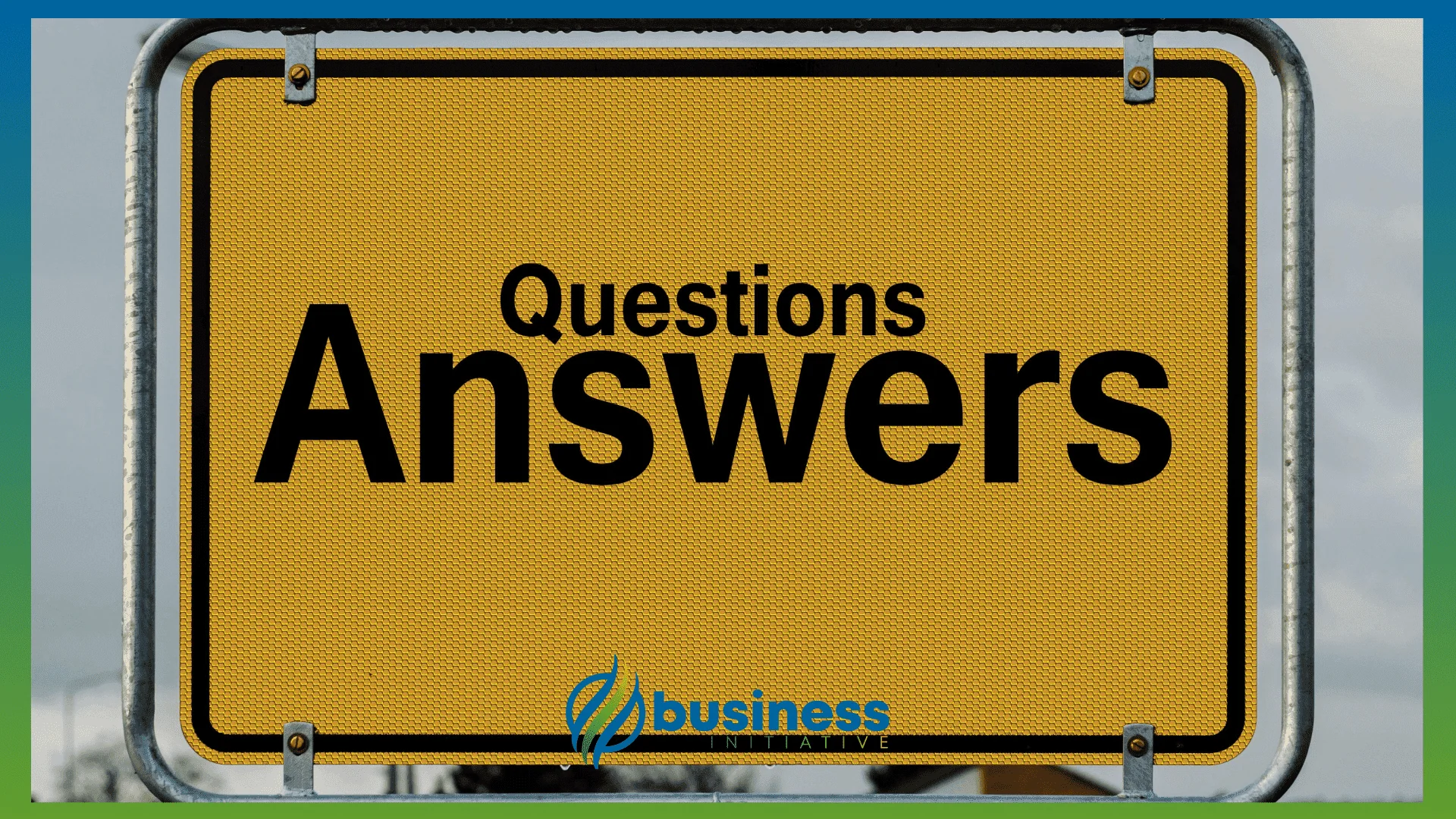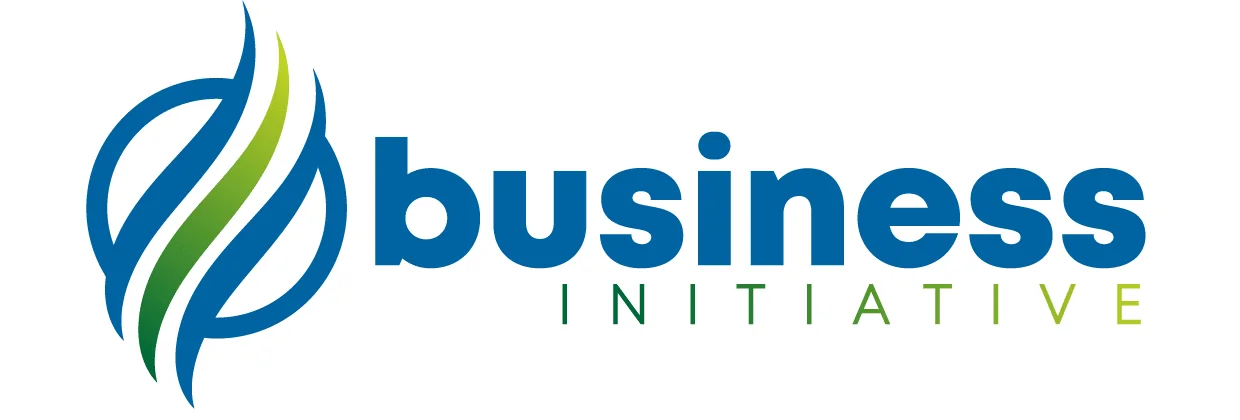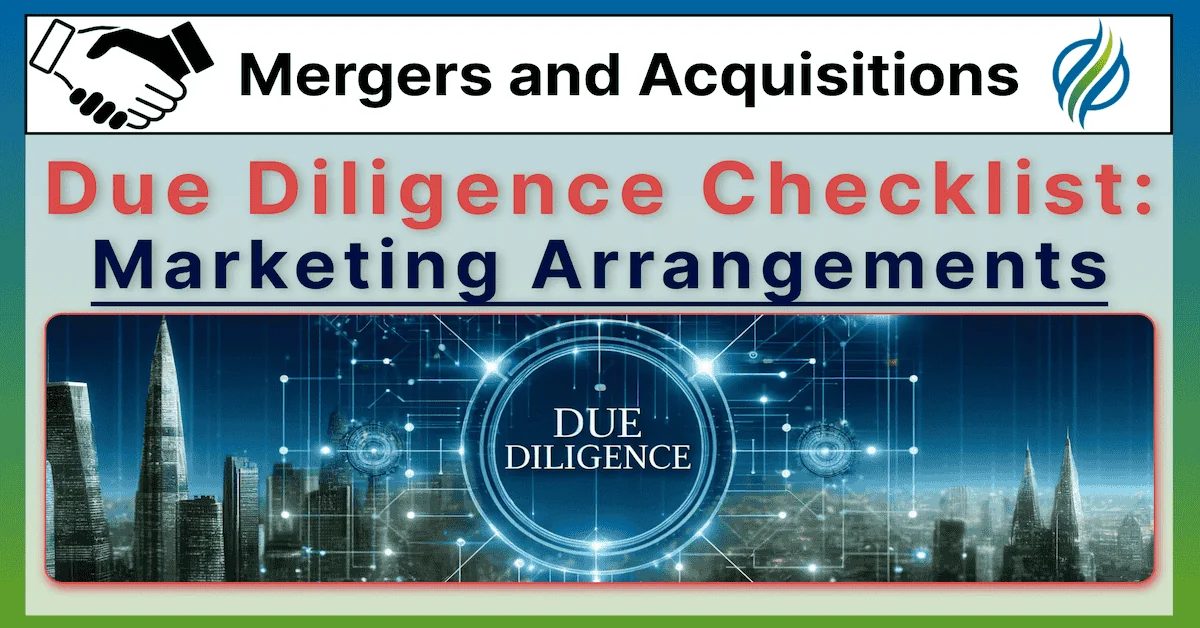In this article, we dive into the crucial aspects of marketing due diligence in mergers and acquisitions.
Understanding these elements is vital for making informed decisions.
We will cover everything from reviewing sales agreements to evaluating marketing campaigns.
Each section provides practical steps and insights to help you assess the target company’s marketing effectiveness.
 Key Takeaways
Key Takeaways
- Review sales and distributor agreements to understand sales channels and potential risks.
- Evaluate marketing materials for consistency and effectiveness in brand communication.
- Analyze market surveys to gain insights into customer preferences and market trends.
- Assess public relations efforts to understand the company’s public image and communication strategies.
- Measure the ROI of marketing campaigns to identify successful strategies and optimize future efforts.
Why is this important?
Marketing due diligence reveals strengths, weaknesses, and potential risks.
It helps you understand how well a company promotes and sells its products or services.
This knowledge can guide your investment decisions and strategic planning.
To get the most out of this article, focus on the practical steps and self-assessment questions in each section.
They are designed to give you clear, actionable insights. Use the resources provided to deepen your understanding.
Ready to enhance your M&A strategy?
Keep reading to unlock the secrets of successful marketing due diligence.
 Table of Contents
Table of Contents
Understanding the target company’s marketing arrangements is crucial during M&A due diligence.
This involves a thorough review of sales representative agreements, distributor agreements, and other marketing-related contracts.
Evaluating these aspects provides insights into the company’s market reach, strategic partnerships, and potential risks associated with their marketing channels.
A detailed examination of marketing arrangements not only reveals how the target company promotes and sells its products or services but also uncovers the underlying strengths and weaknesses of its marketing strategies.
By scrutinizing these elements, buyers can make informed decisions about the viability and future prospects of the acquisition.

➤ MORE: Check out the FULL Due Diligence Checklist here
Review Sales Representative and Distributor Agreements:
To grasp the target company’s sales strategy, it is essential to obtain and scrutinize copies of their sales representative and distributor agreements.
These documents reveal the terms, conditions, and territories covered, helping to assess the company’s sales channels and potential risks.
Analyzing these agreements gives a comprehensive view of how the company manages its sales force and partnerships, and highlights any contractual obligations that could affect future business operations.
Practical Benefits:
-
Identifies the scope and effectiveness of the company’s sales channels.
-
Reveals any exclusivity clauses or territory restrictions that could impact market penetration.
-
Highlights termination provisions that might pose risks or opportunities.
Importance:
-
Understanding these agreements helps gauge the stability and scalability of the company’s sales operations.
-
Ensures alignment with the overall business strategy and future growth plans.
-
Identifies potential legal or operational risks tied to existing sales contracts.
Practical Steps:
-
Obtain Agreements: Collect all relevant sales representative and distributor agreements from the target company.
-
Verify Terms and Conditions: Analyze the key terms, including duration, termination provisions, and exclusivity clauses.
-
Assess Territorial Coverage: Determine the geographic areas covered and any associated limitations or opportunities.
-
Align with Business Strategy: Evaluate how these agreements fit within the company’s broader strategic goals.
Self-Assessment Questions:
-
What are the key terms and conditions of sales representative agreements?
-
Are there any exclusivity clauses or territory restrictions?
-
What are the termination provisions for these agreements?
-
How well do these agreements align with the company’s overall strategy?
-
Sales Agreement Templates and Guidelines: DocuSign
-
Contract Analysis Tools: Ironclad
Evaluate Standard Sales Forms and Literature:
Reviewing the target company’s standard sales forms, catalogs, and marketing literature is vital to understanding their marketing strategies and how they present products or services to customers.
These materials reflect the company’s branding efforts and the effectiveness of its marketing communications.
By evaluating these documents, buyers can gain insights into the company’s approach to customer engagement and identify any areas where marketing efforts may need enhancement or realignment.
Practical Benefits:
-
Provides insights into the company’s branding and marketing effectiveness.
-
Helps identify areas where marketing materials may need updating or improvement.
-
Assesses the consistency and professionalism of the company’s customer-facing materials.
Importance:
-
Ensures that marketing materials effectively communicate the company’s value proposition.
-
Identifies potential gaps or inconsistencies in marketing efforts.
-
Supports a comprehensive understanding of the company’s market positioning.
Practical Steps:
-
Collect Marketing Materials: Gather all sales forms, catalogs, and marketing literature used by the target company.
-
Analyze Content: Review the materials for accuracy, relevance, and alignment with the company’s brand image.
-
Assess Consistency: Ensure that all marketing materials present a cohesive and professional image.
-
Identify Improvements: Note any areas where updates or enhancements are necessary.
Self-Assessment Questions:
-
How effective is the company’s marketing literature?
-
Are the sales forms and catalogs up to date?
-
How well do these materials align with the company’s brand image?
-
Marketing Literature Best Practices: HubSpot
-
Sales and Marketing Tools: Salesforce
Assess Market Surveys and Research:
Market surveys and research reports conducted by or for the target company provide valuable insights into the target markets and customer preferences.
These documents are essential for understanding how the company positions itself in the market and responds to consumer needs and industry trends.
By analyzing this data, buyers can evaluate the effectiveness of the company’s market strategies and identify potential growth opportunities or risks.
Practical Benefits:
-
Offers a data-driven understanding of the company’s market position.
-
Reveals customer preferences and potential areas for growth.
-
Helps validate the company’s marketing strategies and business decisions.
Importance:
-
Ensures that the company’s marketing strategies are informed by accurate and reliable data.
-
Identifies market trends and customer needs that can impact the company’s future performance.
-
Supports strategic decision-making and risk assessment.
Practical Steps:
-
Obtain Reports: Request copies of all market surveys and research reports available.
-
Verify Accuracy: Assess the reliability and validity of the data presented in these reports.
-
Analyze Insights: Extract key insights regarding customer preferences, market trends, and competitive positioning.
-
Evaluate Utilization: Determine how the company uses this research to inform its marketing strategies.
Self-Assessment Questions:
-
What market surveys and research reports are available?
-
How accurate and reliable is this market research?
-
What insights do these surveys provide about customer preferences?
-
How does the company use this research to inform marketing strategies?
-
Market Research Platforms: Nielsen
-
Industry Reports and Data: Gartner
Review Press Releases and Public Relations Efforts:
Analyzing the target company’s press releases and public relations efforts helps assess their public image and communication strategies.
Effective PR efforts can enhance a company’s reputation, influence market perception, and drive customer engagement.
By reviewing these materials, buyers can gauge how well the company manages its public image and identify any potential risks or opportunities associated with its communication strategies.
Practical Benefits:
-
Provides insights into the company’s public relations strategy and effectiveness.
-
Helps gauge the company’s reputation and public perception.
-
Identifies any potential public relations risks or opportunities.
Importance:
-
Ensures that the company maintains a positive and consistent public image.
-
Highlights the impact of public relations efforts on the company’s reputation and brand.
-
Supports the evaluation of the company’s communication strategies.
Practical Steps:
-
Collect Press Releases: Gather all recent press releases issued by the company.
-
Analyze Content: Review the messages and themes communicated in these press releases.
-
Assess Effectiveness: Evaluate the reach and impact of the company’s public relations efforts.
-
Identify Improvements: Note any areas where public relations strategies can be enhanced.
Self-Assessment Questions:
-
What are the key messages in the company’s press releases?
-
How effective are the company’s public relations efforts?
-
What impact have these efforts had on the company’s public image?
-
Public Relations Tools: PR Newswire
-
Media Monitoring Services: Cision
Evaluate Marketing Campaign Effectiveness:
Analyzing the effectiveness of recent marketing campaigns provides insights into the return on investment (ROI) and impact on sales.
Understanding the success of these campaigns helps buyers determine how well the company allocates its marketing resources and identifies strategies that drive growth.
By evaluating campaign performance, buyers can gain a clearer picture of the company’s marketing efficiency and potential for scaling successful tactics.
Practical Benefits:
-
Measures the success of marketing campaigns in terms of sales and ROI.
-
Identifies the most effective marketing strategies and tactics.
-
Helps optimize future marketing efforts for better results.
Importance:
-
Ensures that marketing investments are yielding positive returns.
-
Supports strategic planning and resource allocation for marketing activities.
-
Identifies opportunities to improve the effectiveness of marketing campaigns.
Practical Steps:
-
Collect Campaign Data: Gather data on all recent marketing campaigns, including metrics such as reach, engagement, and sales impact.
-
Analyze Performance: Evaluate the effectiveness of each campaign using relevant metrics and benchmarks.
-
Calculate ROI: Determine the return on investment for each marketing effort.
-
Identify Best Practices: Highlight the strategies and tactics that have proven most effective.
-
Optimize Future Campaigns: Use insights gained to refine and improve future marketing campaigns.
Self-Assessment Questions:
-
How successful have recent marketing campaigns been?
-
What metrics are used to measure campaign effectiveness?
-
How does the company calculate the ROI of marketing efforts?
-
What strategies have been most effective in driving sales?
-
How do marketing efforts align with overall business goals?
-
Marketing Analytics Tools: Google Analytics
-
Campaign Performance Insights: HubSpot
FAQs - Frequently Asked Questions About Marketing Due Diligence

Why is marketing due diligence important in M&A?
It reveals strengths, weaknesses, and potential risks in the target company’s marketing strategies.
Learn More...
Marketing due diligence is crucial as it provides a comprehensive understanding of how well the target company promotes and sells its products or services.
This process uncovers the effectiveness of marketing strategies, identifies potential risks, and helps align marketing efforts with business goals.
By evaluating marketing agreements, campaigns, and public relations efforts, buyers can make informed decisions and optimize future strategies.
What should I look for in sales representative agreements?
Examine key terms, conditions, and territorial coverage.
Learn More...
When reviewing sales representative agreements, focus on the key terms, conditions, and territorial coverage to understand the scope and limitations of the sales operations.
Look for exclusivity clauses, termination provisions, and how these agreements align with the company’s overall strategy.
- Identify potential risks and opportunities in the sales channels.
- Ensure stability and scalability in sales operations.
- Align agreements with strategic goals.
How do I assess the effectiveness of marketing materials?
Review for accuracy, relevance, and brand alignment.
Learn More...
Assess the effectiveness of marketing materials by checking for accuracy, relevance, and how well they align with the company’s brand image.
Evaluate the consistency and professionalism of sales forms, catalogs, and marketing literature to ensure they effectively communicate the company’s value proposition.
- Identify areas for updates or enhancements.
- Maintain a cohesive and professional image.
- Ensure materials effectively engage customers.
What role do market surveys play in M&A due diligence?
They provide data-driven insights into market position and customer preferences.
Learn More...
Market surveys play a vital role by offering data-driven insights into the target company’s market position and customer preferences.
They reveal important trends, customer needs, and competitive positioning, which help validate the company’s marketing strategies and business decisions.
Accurate and reliable market research supports strategic planning and risk assessment, guiding informed decision-making during the acquisition process.
How can I measure the ROI of marketing campaigns?
Analyze metrics like reach, engagement, and sales impact.
Learn More...
To measure the ROI of marketing campaigns, gather data on metrics such as reach, engagement, and sales impact.
Evaluate the performance of each campaign using relevant benchmarks, and calculate the return on investment.
- Identify the most effective strategies.
- Optimize future marketing efforts for better results.
- Ensure marketing investments yield positive returns.
Why is reviewing public relations efforts important in M&A?
It helps assess the company’s public image and communication strategies.
Learn More...
Reviewing public relations efforts is important as it provides insights into how well the company manages its public image and communication strategies.
Effective PR can enhance the company’s reputation, influence market perception, and drive customer engagement.
- Identify potential risks and opportunities.
- Support the overall evaluation of the company’s market presence and strategies.
- Ensure consistent and positive public communication.
What are the benefits of evaluating standard sales forms and literature?
It ensures marketing materials are effective and aligned with the brand.
Learn More...
Evaluating standard sales forms and literature helps ensure that marketing materials are effective, accurate, and aligned with the company's brand image.
This assessment provides insights into the company's marketing strategies, customer engagement, and potential areas for improvement.
Consistent and professional marketing materials support a strong brand presence and enhance customer trust and engagement.
How do I identify the most effective marketing strategies?
Analyze recent campaign performance and ROI.
Learn More...
To identify the most effective marketing strategies, analyze the performance of recent campaigns, focusing on metrics like reach, engagement, and ROI.
Determine which strategies and tactics have yielded the best results, and use these insights to refine and optimize future campaigns.
Understanding what works best helps allocate resources efficiently and achieve better marketing outcomes.
What are the key elements of marketing due diligence?
Review sales agreements, marketing materials, and campaign effectiveness.
Learn More...
Key elements of marketing due diligence include reviewing sales representative and distributor agreements, evaluating marketing materials, and assessing the effectiveness of marketing campaigns.
This process provides a comprehensive understanding of the target company’s marketing strategies, customer engagement, and market positioning.
- Identify potential risks and opportunities.
- Support informed decision-making during mergers and acquisitions.
- Ensure alignment with strategic business goals.
In Summary…
In this comprehensive guide, we’ve explored the essential components of marketing due diligence for mergers and acquisitions.
By thoroughly reviewing sales and distributor agreements, evaluating marketing materials, analyzing market surveys, assessing public relations efforts, and measuring the ROI of marketing campaigns, you gain a deep understanding of the target company’s marketing effectiveness.
Applying this information practically helps you make informed decisions.
You’ll uncover potential risks and opportunities, ensuring the stability and scalability of the company’s sales operations.
This knowledge enables you to align your strategic goals, optimize marketing efforts, and improve overall business performance.
Using the outlined steps, you will:
- Gain insights into the target company’s market reach and strategic partnerships.
- Identify strengths and weaknesses in marketing strategies.
- Enhance decision-making with accurate, data-driven insights.
- Optimize future marketing campaigns for better ROI.
- Ensure effective communication and branding alignment.
Ready to take your M&A strategy to the next level?
Schedule a consultation call with Business Initiative or reach out with our contact form.
Stay informed with our latest insights—subscribe to the Initiative Newsletter.
Explore more resources and tools at X.
Start your journey towards successful mergers and acquisitions with a solid marketing due diligence plan.
Contact us today!
Sources
- DocuSign: For sales agreement templates and guidelines.
- Ironclad: For contract analysis tools.
- HubSpot: For marketing literature best practices.
- Salesforce: For sales and marketing tools.
- Nielsen: For market research platforms.
- Gartner: For industry reports and data.
- PR Newswire: For public relations tools.
- Cision: For media monitoring services.
- Google Analytics: For marketing analytics tools.
- HubSpot: For campaign performance insights.


